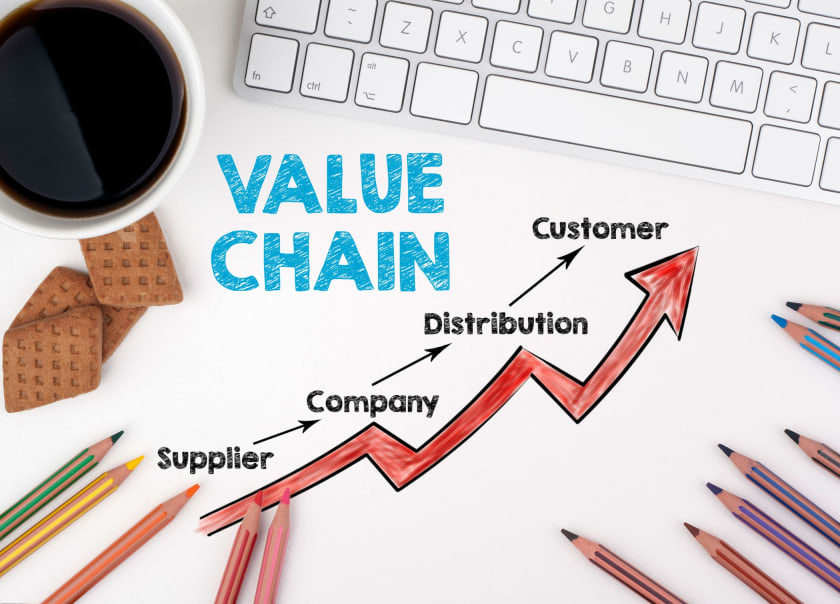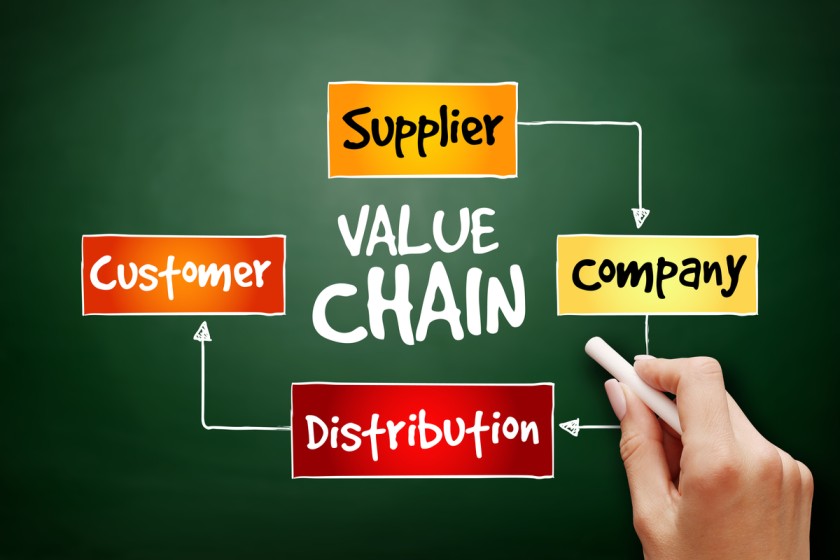Value Chain Analysis: An Insight into the Fashion Industry



The supply chain is a core part of any business’s success, especially in the fashion industry. The fashion business is a powerful economic engine for any country and has been continuously evolving due to multiple factors, including e-commerce, globalization, and retail consolidation. The dynamics change so continually that it calls for dedicated systems to keep an eye on the fashion industry.
The value chain analysis offers combined benefits to the fashion industry and is a crucial part of modern businesses. Many companies take the help of this detailed analysis when planning for something important like the supply chain for Amazon.
What is value chain analysis in Fashion?
It is the concept of detecting and analyzing the primary and support activities adding value to the final product. The value chain analysis aims to reduce the costs of making effective products without compromising the quality. It represents the total internal activities of any business while transforming the input into output.
When linked to the highly evolving fashion industry, the value chain analysis is the strategy tool that can analyze the internal activities of the business. It recognizes the valuable activities and activities with scope for improvement. The highly competitive fashion industry can benefit from this value chain analysis to perform the essential tasks better than the closest competitor.
The final result of the value chain analysis for the fashion industry is simple. For example, a brand has a manufacturing plant located in one location and uses its supply chain from a single vendor for distribution activities. Another competitor is taking the services of multiple vendors according to their performance in different regions and is offering competitive advantages to the highest-performing vendor.
Here, the inclusion of multiple vendors adds value to the simple supply chain of the fashion house. Offering high-quality products to the customers by minimizing the supply chain costs is the primary purpose of any value chain analysis.
Difference between a value chain and supply chain:

Both value chain and supply chain have common goals but adopt a different methodology. Both concepts aim to satisfy the customers with affordable and stylish products while keeping their operations smooth and efficient at all times.
The value chain regards worth to every supply chain participant and studies its value in the total supply chain. The competitive and profitable edge offered by the different supply chain participants depends on their interaction and coordination. Hence, it is clear that the value chain lies inside the supply chain. The value chain aims to create value that can safely exceed the cost of offering goods and services to the customers.
On the other hand, the supply chain involves different basic steps that include planning, sourcing, delivery, returns, etc. It is the detailed process of offering the product from the fashion business’s manufacturing to the end-user. The supply chain is managed by dedicated experts who keep a vigilant eye on the different steps and ensure coordination of various parties in delivering the products to customers.
Many businesses are looking for dedicated partnerships with Fashinza that handles all supply chain work for different fashion brands. It is a fashion business service provider that can improve the value chain for any apparel or fashion house. It is all about maintaining the premium status of the fashion products and services for different customers.
Michael Porter’s model and its implementation in the fashion industry
Before jumping to the detailed analysis of the fashion industry offered by the value chain analysis, it is vital to understand this model. It was in 1985 that Michael Porter introduced the most generic value chain model. He defined the total activities in any industry into two categories- primary activities and support activities.
The primary activities add direct value to the final product of the customer, while the support activities only add indirect value. Any manufacturing process, including the fashion industry, consists of a combination of these two internal activities under consideration in the value chain analysis.
The primary activities are sales, operations, inbound and outbound logistics, marketing, service functions, etc. The support activities are firm infrastructure, HR management, procurement, technology functions, etc. The primary functions are similar in almost all the companies and directly add to the cost of the production process. The support activities in Porter’s value chain model are the real game-changer that can make or break the difference for any fashion industry. The cost in the primary activities can be easily identified, while the support activities have varying costs.
Businesses having fashion brands or in apparel manufacturing are investing in the technology functions like system dynamics to study the impact of the product variety on the supply chain of their fast fashion products. The dedicated research and development teams are driving profits to these fashion houses as they are constantly in search of popular products. The differentiation advantages to any fashion house are best offered by the general admin, human resources, information systems, etc., only.
How to get the differentiation advantage using value chain analysis in the fashion industry?

The differentiation benefits are obtained from the value chain analysis when the business has to compete with other fast fashion competitors except for costs. The key points considered in the differentiated value chain analysis are creating superior products, satisfying customers, adding superior features, etc.
The quick steps for differentiated value chain analysis are:
- Finding the activities that add value: Many times, it is not only about the type of apparel manufacturing but also about the type of marketing that may add value to the entire business’s supply chain.
- Finding and analyzing differentiation strategies: The activities like adding product features, customer service, responses, customization, offering complementary products, etc., are analyzed for best benefits and possible issues.
- Finding the ideal sustainable differentiation: The best combination of the differentiation activities and strategies gets a pass for sustainability and is implemented after the differentiated value chain analysis.
How to get the cost advantage using value chain analysis in the fashion industry?
The cost benefits are obtained from the value chain analysis when the business is competing with other fast fashion competitors based on costs. This type of value chain analysis helps find the key factors driving the cost of apparel manufacturing. The critical points considered in the cost value chain analysis are cost advantage or cost disadvantage of different factors.
The quick steps for cost value chain analysis are:
- Finding the primary and support activities of the business: It requires a detailed understanding of the company’s process and identifying the primary and support activities for the fashion business.
- Finding the relative importance of activity while considering total costs requires the association of every activity and its contribution to the entire product cost.
- Finding the cost drivers for activities involves identifying the cost drivers for multiple activities that give insight into the critical areas for improvement.
- Finding the link between different activities: When the cost drivers are established, a decrease in one activity may cause a subsequent reduction in the others. The link may be vice-versa and hence needs to be studied thoroughly.
- Finding the areas for reducing costs: The final step in the cost value chain analysis is planning to reduce overall product costs.
Insights into the fashion industry using the value chain analysis
Customers are becoming vocal-like never before, and hence it is important even for the top fashion houses to invest in the value chain analysis. It helps improve the status of products or services taken positively by the customers.
The consistent evolution in the supply chain is driven by the benefits of the value chain analysis. It is no longer a unidirectional and sequential process but combines the tried and tested strategies for typical products.
The standard fashion houses and the private houses invest in machine learning or artificial intelligence-powered tools to drive the agile supply chain operations in the fashion industry.
Apart from offering cost and differentiated advantages, the value chain analysis is now looking for an accurate forecast, inventory management, and dedicated supply chain optimization. The revolution of change driven by the value chain analysis in the fashion industry is enhanced by digital tools.
Wrapping Up:
After having a detailed look at the value chain analysis and its role in the fashion industry, it becomes clear that modern businesses are incomplete without the insights offered by this analysis. Whether it is about finding the profitable products out of the total range of apparel or ensuring the seamless supply of the popular demand, the value chain is required. For businesses that lack a dedicated team for the supply chain, Fashion is the ideal solution provider.
Fashinza is a B2B manufacturing marketplace that solves all Fashion or apparel supply chain issues, including the supply chain for Amazon. The company promises to bring the best for any apparel company by working in the trending categories and is already trusted by more than 500 brands globally.



















